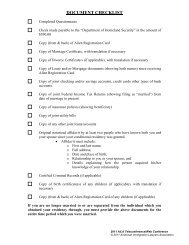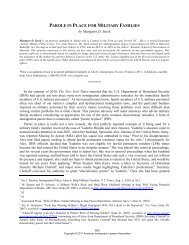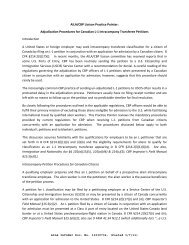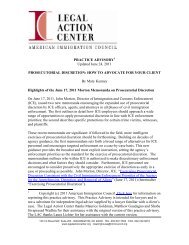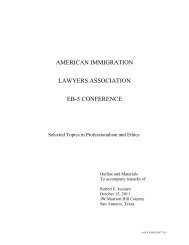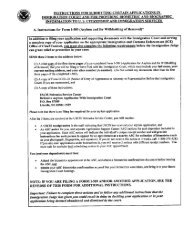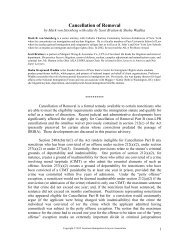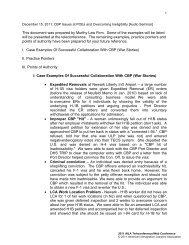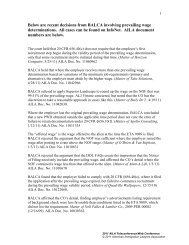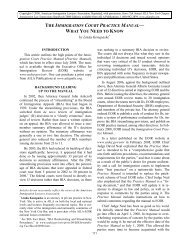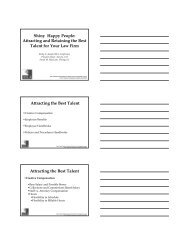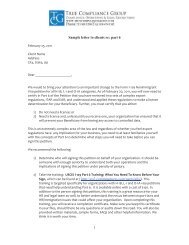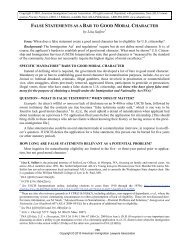Immigration Practice Pointers, 2010-11 Ed. - AILA webCLE
Immigration Practice Pointers, 2010-11 Ed. - AILA webCLE
Immigration Practice Pointers, 2010-11 Ed. - AILA webCLE
Create successful ePaper yourself
Turn your PDF publications into a flip-book with our unique Google optimized e-Paper software.
does not possess the capability under its current paper-based processing model to manage and<br />
track adjudication processing based upon each unique applicant. Therefore, it is important to note<br />
that the processing time information is the “average” time that a case pending within a certain<br />
USCIS office is taking to be processed. Because the processing time figures are an average<br />
calculation, it is possible that there are individual cases that have been pending within the USCIS<br />
inventory for longer than the stated processing time indicates.<br />
Based upon the current methodology for calculating processing times, USCIS requires 30 days to<br />
collect and conduct quality reviews on the performance data received from its field offices and<br />
service centers to ensure that the final data used to calculate the processing time information is<br />
accurate and reliable. Another 15 days is needed to calculate the processing times, receive field<br />
office and service center concurrence, and upload to the USCIS website. Although the processing<br />
time information has become aged by the time it is posted to the USCIS website, it generally<br />
remains accurate since processing times don’t normally change that much from month to month.<br />
Office of Citizenship<br />
Question: Citizenship Test<br />
Please provide an update on USCIS’ efforts to conduct a records study to determine pass-fail rates on the<br />
revised citizenship test and look at its impact on different demographic groups, as compared to the<br />
previous version of the test. Please share any results or findings that are already available.<br />
Response: USCIS contracted with ICF International to perform a record study to determine the<br />
pass rate for the redesigned naturalization test. In addition to this record study data collection,<br />
USCIS will have comparative data - comparing the current test with the previous test – in late<br />
summer 20<strong>11</strong>. USCIS will disseminate key findings in the fall.<br />
In the meantime, USCIS continues to review and make publicly available data on applicant<br />
performance on the current test, which is available here:<br />
http://www.uscis.gov/portal/site/uscis/menuitem.eb1d4c2a3e5b9ac89243c6a7543f6d1a/?vgnextoi<br />
d=6c40ec90d8668210VgnVCM100000082ca60aRCRD&vgnextchannel=6c40ec90d8668210Vgn<br />
VCM100000082ca60aRCRD<br />
Office of Transformation Coordination<br />
Question: “I-130 Automatization”<br />
Suggestions:<br />
1.- Documents should be able to be uploaded along with application.<br />
2.- Repeated information from the I-130 should automatically flow to g-325a.<br />
Response: Generally, USCIS ELIS, the online case management system, will require an<br />
applicant to scan and upload supporting documentation when he or she submits an electronic<br />
application. Similarly, in the event additional information or documentation is required after the<br />
electronic application and supporting document has been filed, USCIS will issue an electronic<br />
Request For Evidence (RFE) that will require documents to be scanned and uploaded in USCIS<br />
ELIS. Form I-130 will enter the USCIS ELIS online case management system in a subsequent<br />
release. Certain information may be pre-populated into Form I-130 from prior benefit requests or<br />
from supporting forms.<br />
- 4 -<br />
<strong>AILA</strong> InfoNet Doc. No. <strong>11</strong>042964. (Posted 06/29/<strong>11</strong>)



